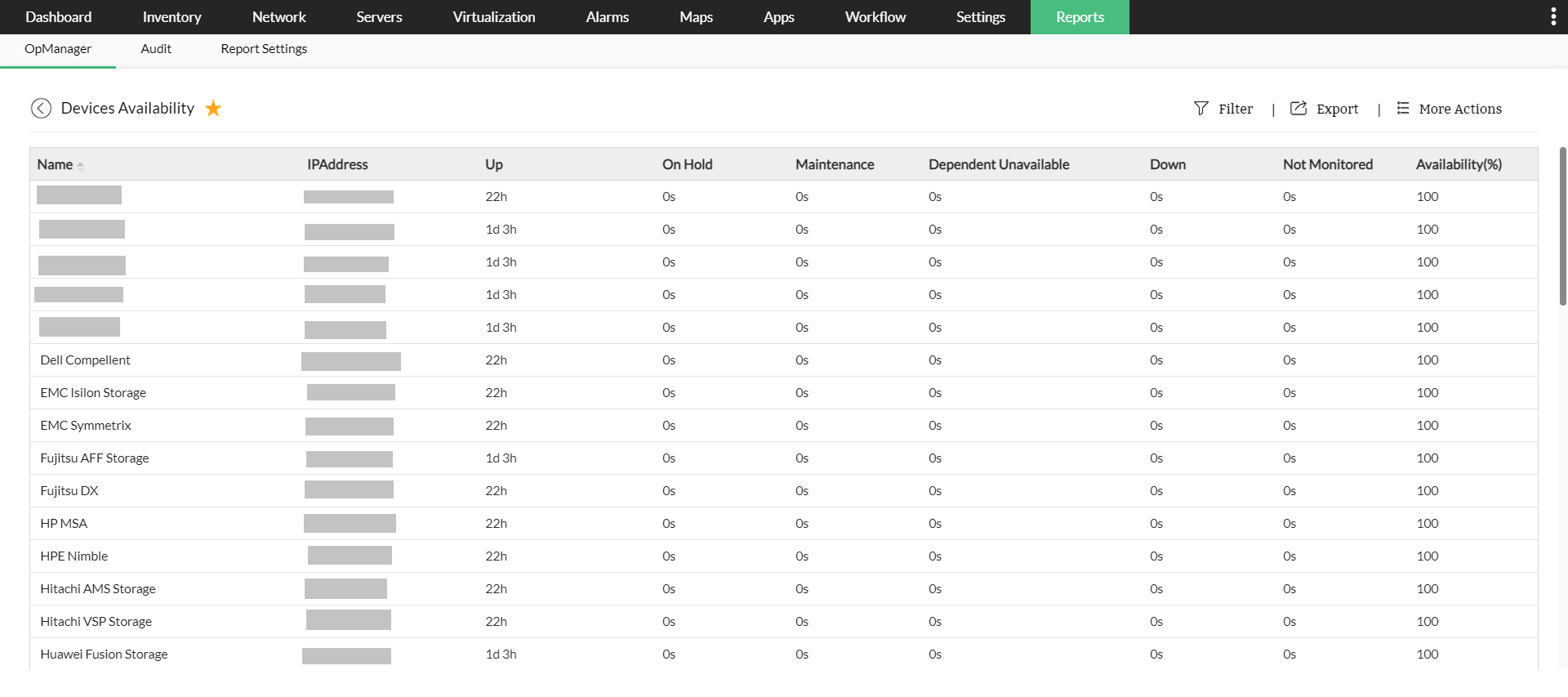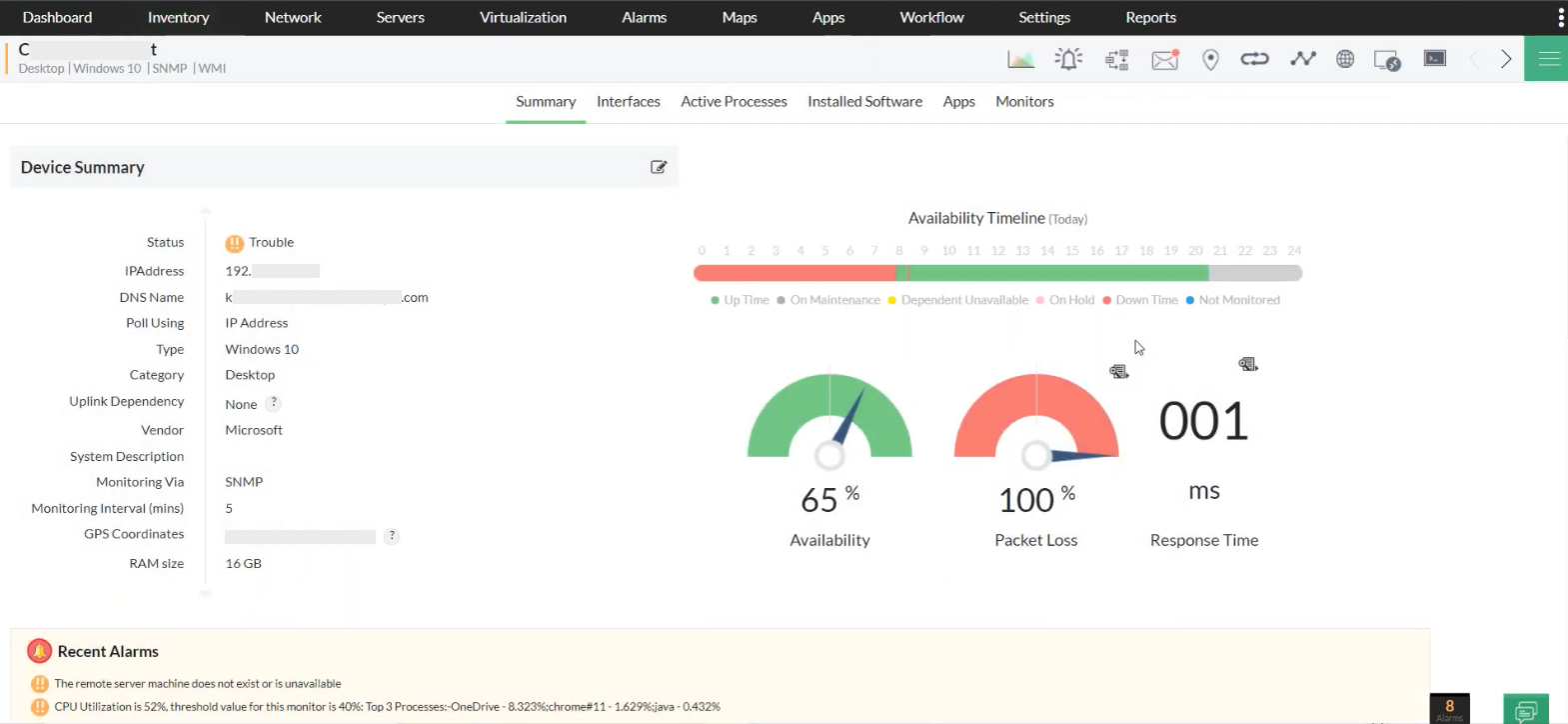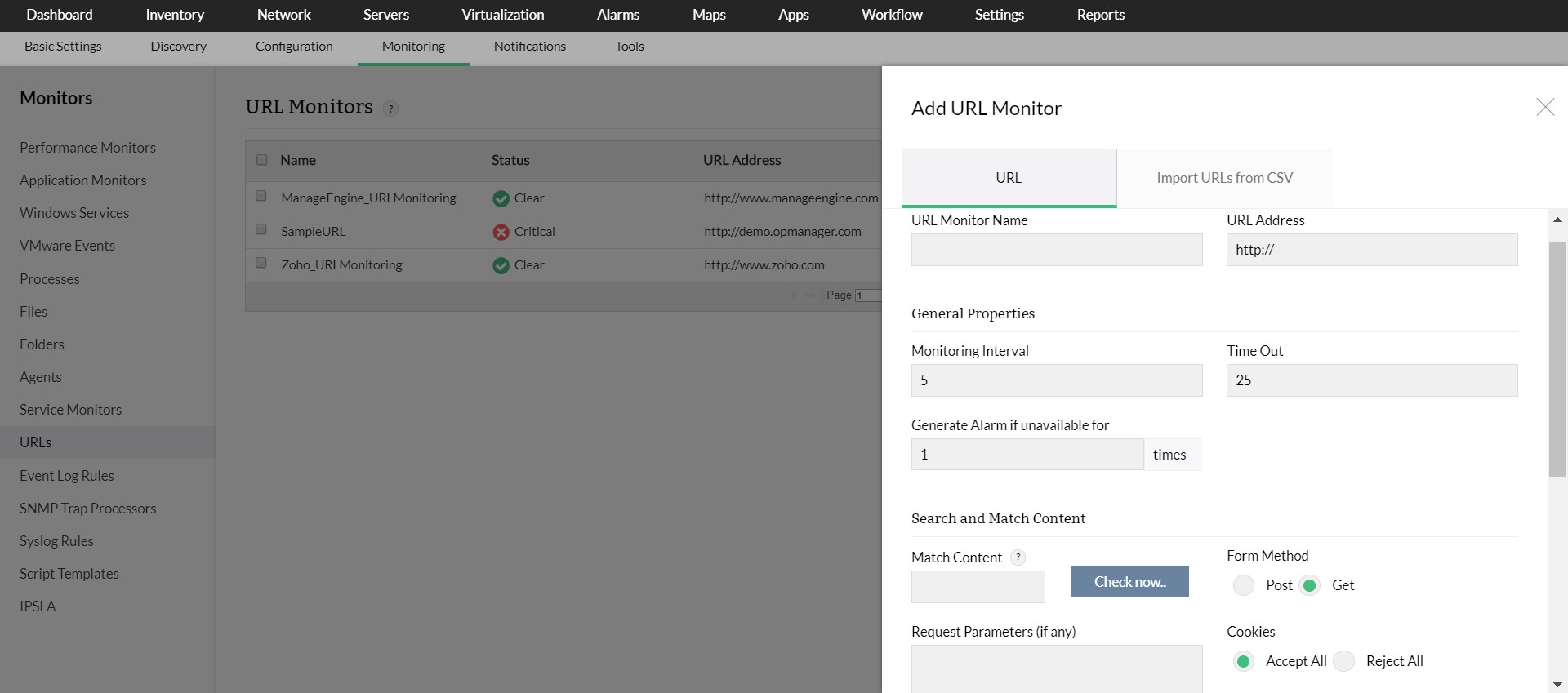IT Infrastructure component uptime monitoring
Device uptime monitoring
OpManager's uptime monitor pings your network devices once every two minutes by default, and if the device fails to respond after two attempts,OpManager will categorize it as an unavailable device. Pinging is a reliable way for IT admins across the globe to identify device availability. To poll devices,OpManager's uptime monitoring tool uses ICMP ping.
If you are in an environment that prohibits ICMP (such as a DMZ) or want to monitor your edge devices, you can choose OpManager's Telnet feature instead. Telnet contains a five-minute default polling interval and four status indicators to give you accurate device statuses.
Interface uptime monitoring
OpManager's network uptime monitoring system makes use of Simple Network Management Protocol (SNMP) to determine the availability of interfaces in your network. These interface statuses are available as individual device statuses, Layer-2 network maps, business views, or custom device groups.
Server uptime monitoring
Server availability is the critical parameter in server monitoring. OpManager's server uptime monitoring tool uses ICMP, TCP, and SNMP to monitor availability . You can configure monitoring interval and automate the monitoring process to avoid server downtime. Once the server uptime monitoring is scheduled, OpManager automatically runs the server uptime monitoring service to track and update the server uptime in real-time.
With OpManager as a Linux and Windows server uptime monitor, you can proactively keep a track of server health and availability as it constantly communicates with servers using different protocols like the WMI and SNMP. OpManager also has a responsive mechanism to resolve server faults as and when they occur and restore server uptime . Reports, on the other hand, helps you understand how your servers are performing and the nature of faults.
Website uptime monitoring
In today's competitive IT market, you cannot take a chance to leave your customers with the error message, "This site is not reachable", even for a minute. Averting this requires 24 X 7 monitoring of your website for availability and performance. With constant monitoring of website uptime, you can providently identify website problems, before they escalate into substantial downtime and lost revenue.
Monitor crucial websites for availability around the clock using OpManager's URL monitor. You can configure URL monitor to monitor URLs, virtual hosts, and the intranet. OpManager's website uptime monitoring restore compromised websites immediately; monitor web server farms; determine if parts of your web application are down; monitor web applications with a login; and more.
Application uptime monitoring
Tracking availability and uptime of applications is crucial to ensure smooth functioning of business operations. OpManager's application uptime monitor uses default performance metrics to monitor health and availability of Active Directory/Exchange/ MSSQL servers. You can also configure threshold values and adjust polling frequencies to keep an eye on uptime of critical applications.
OpManager supports Exchange 2000/2003, Exchange 2007, Exchange 2010, Exchange 2013, Exchange 2016, Exchange 2019 servers.
Service uptime monitoring
Service availability is server availability. Monitoring system-level services for availability and response time is essential to ensure that your application and server management plan is complete. A service uptime monitor like OpManager proactively monitors availability and response time for a number of services including DNS, SMTP, LDAP, Telnet, HTTPS, MSSQL, MySQL, and many more. This level of monitoring is essential to identify or restore faulty applications quickly when a service turns dormant.
OpManager's service monitoring capabilities also provide you detailed reports and graphs on availability and uptime of the services that you are monitoring. This helps analyze historical data and take a call on fault management activities.
Windows service uptime monitoring
OpManager's uptime performance monitoring utilizes Windows Management Instrumentation (WMI) protocol to monitor Windows services uptime and does not require an additional agent to be installed. With OpManager's Windows service monitor, you can automate certain actions such as restarting the service or the server when the Windows service is down, stopping a service that is currently running, and more. This helps reduce redundant workload from network admins plate and focus on critical tasks.
Process uptime monitoring
Process uptime monitoring is important to understand the availability and performance of each critical process associated with the applications or services running on the server. With OpManager's uptime monitoring tool, monitor processes running on servers remotely for their uptime and performance. OpManager uses multiple protocols (SNMP/ WMI/CLI) and monitors processes running on Windows, Linux, Solaris, UNIX, VMware servers, virtual machines, and more.
With OpManager's process monitor, you can also gain in-depth visibility into the load source of system resources. If the resource utilization of a particular process exceeds the set threshold, OpManager sends out alerts instantly and you will be notified in no time.
















